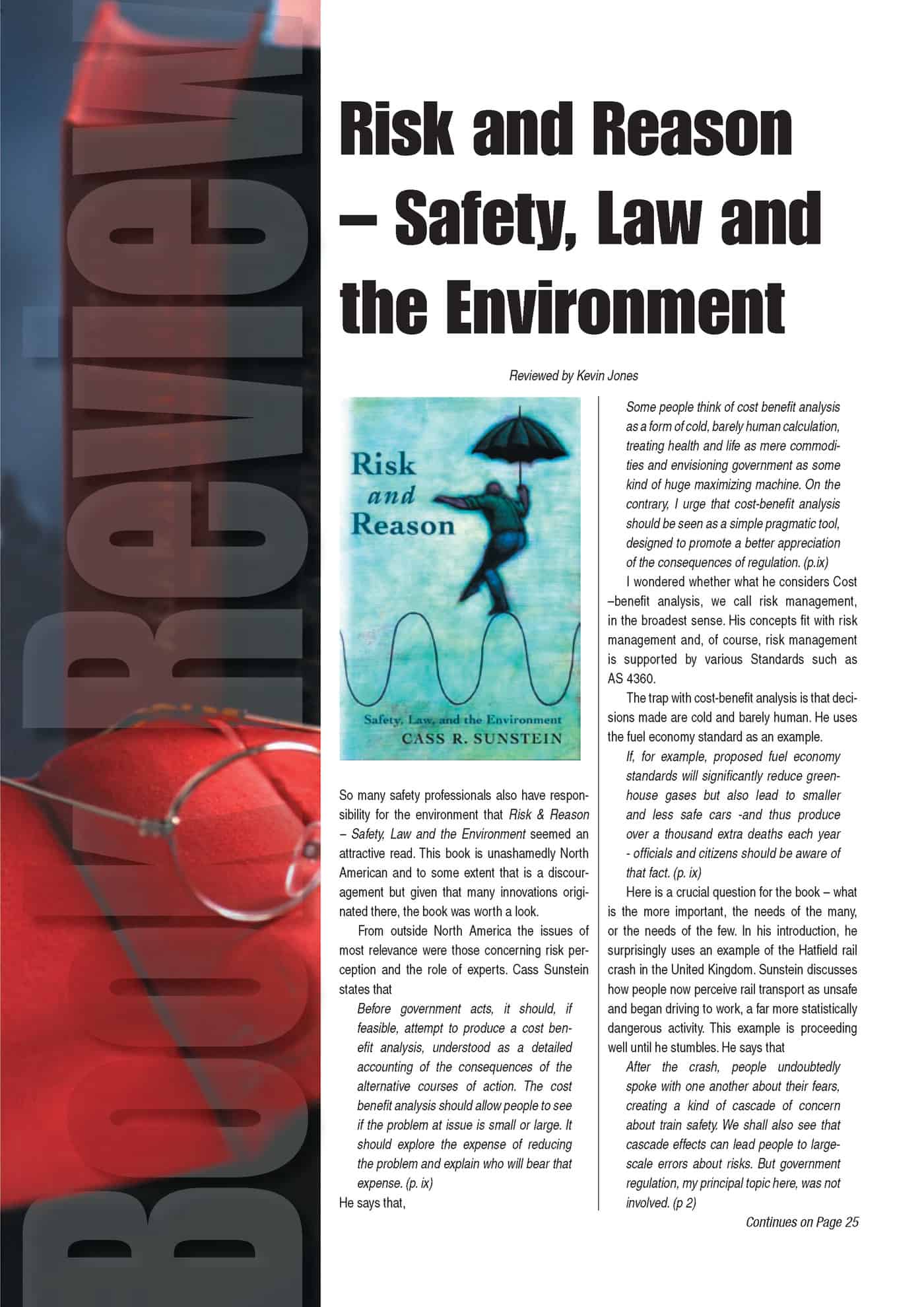Part 2 of Risk & Reason book review from SafetyAtWork magazine 2003
Sunstein closes the chapter “Thinking About Risks” with a short reference to September 11 2001 with which he says that “acts of terrorism show an acute appreciation of the psychological phenomena..”
Throughout the book, there are snippets that can be related to safety management. For instance, he writes of “dreaded deaths” with 3 points:
- People can adapt to suffering much better than they think they can.
- Some pain and suffering may well be an inevitable part of a desirable period in which people…can plan and adapt themselves to the fact of death…(p.66)
- The period of pain and suffering that precedes death ought… to be far less important… than the fact of death itself.”
These points relate to HIV and cancer principally, but can’t we obtain some constructive advantage from having our employees dread workplace or traumatic deaths? First aid training often raises safety awareness because the First Aiders dread having to apply their skills. We drive cautiously because we dread traumatic injuries to our family and ourselves. Dread can lead to caution which leads to safe work.
Sunstein chooses not to deal with the relationship between risk and culture and directs us to “Risk & Culture” by Douglas and Wildavsky (1992). It is fair to acknowledge intellectual limitations but the whole book operates through, predominantly, the concerns of the United States culture and values. The cultural values of the US are not universal and some admission of this variation would have been useful, particularly given that the Douglas and Wildavsky book was published well over 10 years ago.
The illustration of eight propositions for cost-benefit analysis and government decision-making is very useful. They support the integration of qualitative measurements and a broad application of “costs”. One proposition is that “agencies should be required to show that the benefits justify the costs. If they do not, they should be required to show that the action is nonetheless reasonable…” Accountability is now an essential element of all business areas.
Risk and Reason may prove to be invaluable to United States readers but information for others was difficult to extract. (The testimonials on the dust jacket are glowing but are all academic, although one is from outside the US). There is no obligation for writers to include readers outside of their own marketplace but on an issue like risk and in a context of environmental management, it is disappointing that the book does not acknowledge the global readership. As mentioned above even very well known risk experts are not even referenced. The book is parochial and does not acknowledge that international standards do affect the US legal system even if it is less than in other jurisdictions. Environmental issues cross territorial boundaries and are becoming more involved with global legal structures and obligations.
Cass Sunstein has a good writing style and it is not difficult to read. We can only hope that the publishers encourage Mr Sunstein to write a complementary book focussing on risk and reason outside the United States.
The best pathway to Cass Sunstein information and writings is through his listing at Wikipedia. However, I did enjoy reading this article.

